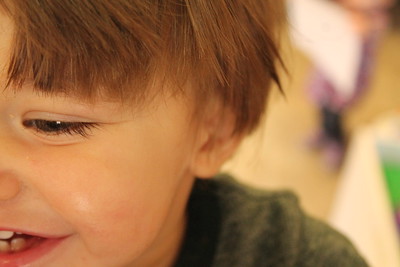If you are looking for one word to describe the state of childcare in Michigan, I would nominate “dismal. While many sectors of the economy have taken COVID-19 hard, childcare is one that has been hit the hardest. Demand for childcare has skyrocketed, in part because so many childcare options have shut down.
The enormous number of closures, combined with the number of childcare workers that have exited the industry, means fewer daycares and fewer childcare options available. The only thing that has not changed is the demand.
It was particularly disappointing to learn that the Washtenaw Community College administration closed the Children’s Center at WCC. Especially at a time when the demand for high-quality daycare had been rising.
The childcare options that remain are unpalatable, to say the least. Some centers have a waiting list that is more than a year long. Other childcare providers simply operate without a license. Still others accept more children than their license allows, hoping to stay ahead of state regulators. As people leave the industry, their absence is pressuring wages for remaining workers upward, which raises costs for Michigan families. And Michigan already has one of the highest full-time daycare costs in the nation.
The WCC Administration closed the Children’s Center at exactly the wrong time. Losing affordable childcare options makes it more difficult for working parents to return to school. Working parents already face long odds when it comes to graduating. Lack of childcare virtually guarantees that these parents (mostly women) will be unable to complete their degree programs.
Subsidies are inadequate when no childcare options exist
Offering subsidies to pay for childcare elsewhere is a simply inadequate solution. That strategy makes the (fatal) assumption that childcare is available if the price is right. Right now, quality, licensed childcare is hard to come by. According to LARA, the state agency responsible for licensing childcare facilities, the number of licensed facilities in Michigan has declined by 5,000 in the past decade.
The decision to close the Children’s Center rests entirely with an out-of-touch WCC Administration that convinced itself that throwing money at the problem could make it go away. What the WCC community needed was universally available, cost-effective, drop-in childcare on campus. In other words, it needed the Children’s Center.
Nonetheless, it is incumbent upon the Board of Trustees to follow up with the WCC Administration regularly regarding adequacy of its plan to subsidize childcare on campus. We need to know what care options were available to students who previously used the Children’s Center. The Board should also ask the administration to provide information regarding the cost of substitute care, the licensing status of the care facilities the students now use and the proximity of these childcare options to campus. The Board must also ask the WCC administration to disclose how many students who had previously used the Children’s Center no longer attend WCC. Primarily, this metric should illuminate the impact of this foolish, ill-timed, and ill-considered decision. It is also the first step toward holding the WCC Administration accountable for the loss of the Children’s Center.
Photo Credit: Robin Zebrowski , via Flickr






















